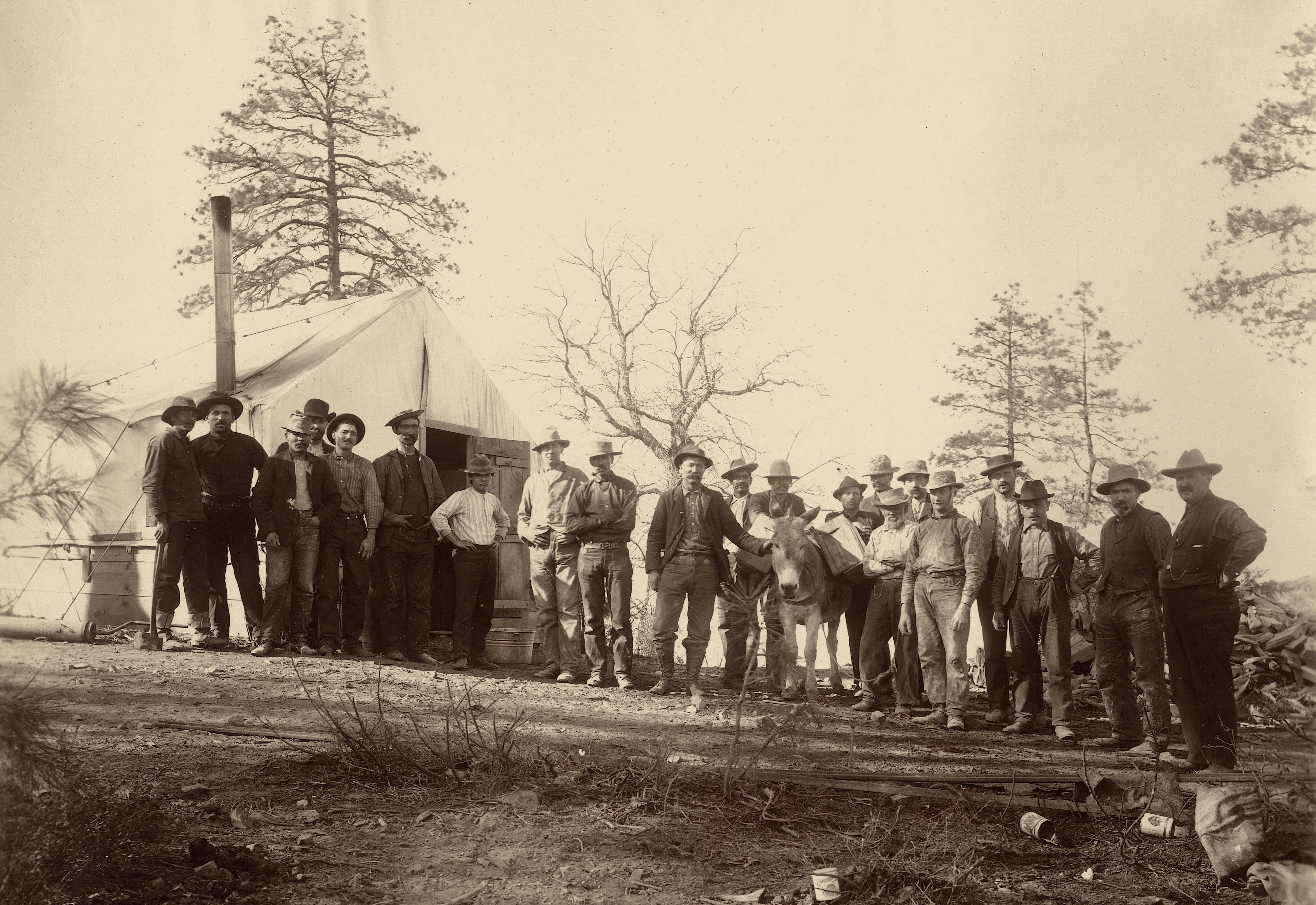“A Gold Miner is a Liar Standing Next To A Hole In The Ground” ~ I’ll tell you half the story…the rest you fill it in.
Highland Park, sometimes erroneously corrected as ‘Highland Pines’ but they are not exactly one in the same. Highland Pines the community, is a populated place situated near Prescott and sitting within the Prescott National Forest, in Yavapai County, Arizona, United States. Highland Pines is the promotional name associated with the Highland Park areas several subdivisions.[2] In the Arizona Territorial era up to 1912, and Statehood until around the late 1920s, this particular area of land acted more as a cattle ranch. There is a unique mining history of this region from the late 1890’s into about 1921, lies within the Thumb Butte Mining District. The present day community which appears to be initially platted by the Arizona Corporation Highland Pine Properties Inc. began in the late 1950s.
History of the land
Second star to the right, straight on ’til morning…
Highland Pines has a rich history of mining prospects, mining claims, and cattle ranching. It is located in the Sierra Prieta region, in the Thumb Butte mining district, near Iron Springs. During the late 1800s and early 1900s, lode mining claims were located by several different prospectors who identified their claims in and near Highland Pines under The Mining Act which allowed prospectors to survey and claim public lands in the western states. The stated purpose of this law was to open the mineral claims in the public lands of the United States to exploration and purchase (from the government).
A mine is a prospect which has graduated into a profitable undertaking. A property which does not profit, or one that is not up to this particular stage in its development, cannot yet meet the definition of a ‘mine‘. Not all prospects become mines, and not all mines stay or can stay profitable. The works treatment of a mines ore bodies has the requirement of one already having been thoroughly established, and also showing a continuing profit.
A financially viable treatment must be established in order for the classification of an established ‘mine’ to exist. It is a fraudulent misrepresentation to state upon public offerings of the company seeking prospective capital or further capital in a ‘mine’ when the property itself is likely nothing more than just a prospect. A prospect is a property were there is an expectation that mineral bearing ores may be obtained. A property that is a ‘pit’ by definition, is distinguished from a ‘mine’ in that stones are likely being removed, however the property is simply nothing more than a ‘quarry’. A prospect, a proved prospect, a mine an established mine have very different definitions.
Department of the Interior (DOI) decisions require a discovery on ‘each claim based on an actual physical exposure of the mineral deposit within the claim boundaries.’ The DOI’s holding in Jefferson-Montana Copper Mines Co., 41 L.D. 321 (1912), established the full test for a lode claim:
“To constitute a valid discovery upon a lode claim, three elements are necessary:
- There must be a vein or lode of quartz or other rock-in-place;
- The quartz or other rock-in-place must carry gold or some other valuable mineral deposit;
- The two preceding elements, when taken together, must be such that as to warrant a prudent man in the expenditure of his time and money in the effort to develop a valuable mine.[3]
The key word here is: valuable. As in a discovery (property) which holds monetarily exchangeable resources at a profit. This after the prudent man expends his time, his money, and his efforts, finds that those resources as allotted, are still financially valuable to him.
Cattle ranching
A clear violation of the General Mining Act
In the early 1900’s, the section specific to present day Highland Pines in Township 14 north Range 3 West, had several claimants to mineral estates on United States property, within the Prescott National Forest, under the Mining Act. Issues abound with claim jumping, complete relocations masquerading as amended locations, leased unpatented land, misrepresented shafts, mills, Lode names and back office dealings. Along with questionable occupancies and promotion for sales of U.S land that was represented to be patented lands at a time when there was no patent to the lands, eventually Executive Orders were filed effectively condemning the township of all activity, pending the filing of a revised survey. In light of the totality of the history, a truly colorful picture is illustrated.
While simultaneously forging forward with plans for the land under the provisions of the Mining Act, the area related to Young’s ‘Derby Mines’ was doubling as a literal cattle ranch, complete with pastures, wire fencing, corrals, hay bale deliveries and open range for the various stock, which was initially kept under a watchful eye of a full-time caretaker named J.E. ‘the old man’ Wilson. The future of the cattle business in the area redirected the interests of several of the original Lode claimants, beginning in the latter part of the 1880s, when the original vein of the Lowry Lode claim (James R. Lowry, Yavapai County Sheriff) was discovered.
After the passing of Dan Goggin, Wilson resided in one of several homes constructed at the heart of what he promoted to be the Derby. After the death of the first caretaker, George U. Young placed a wanted ad in the Republic, which read: ‘Wanted-Man and wife…to look after stock and do general work; wife to work around the house and must be a good cook.’ Ultimately in about December 1912, a man named Fred J. Smith from the nearby Centipede Mine, where he was already working for the interests of George U. Young, came to what was referred to as the Derby area with his wife Ada E. Smith, where they resided with for many years.
Link Below: Thank you S. Donaldson, R.I.P. Arizona Department of Mines and Mineral Resources:
http://docs.azgs.az.gov/OnlineAccessMineFiles/Pubs/2013-02-0465.pdf
